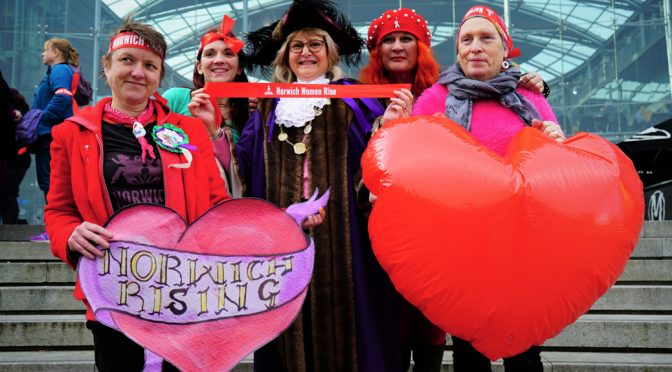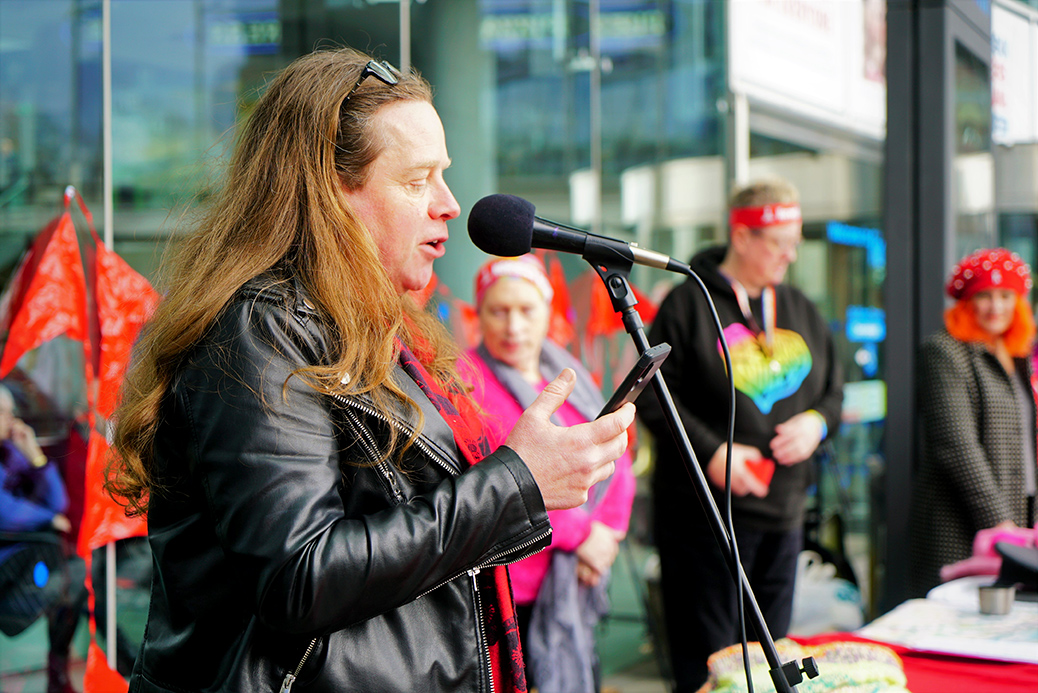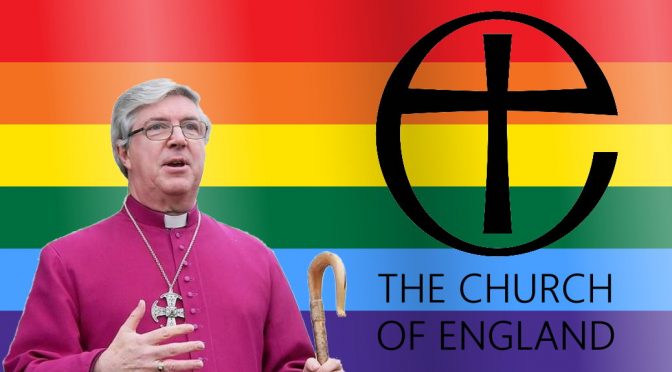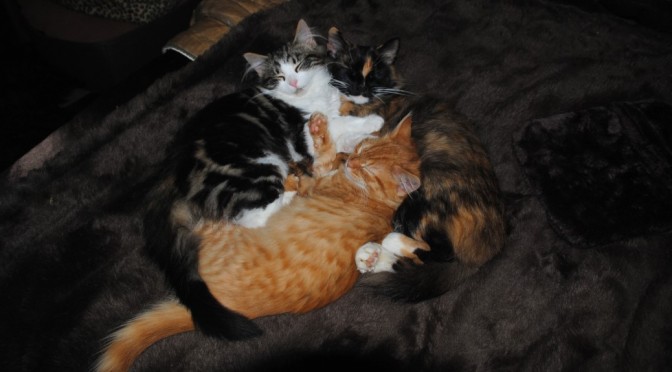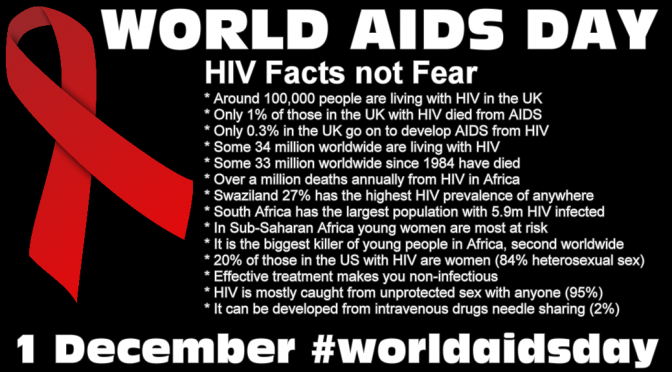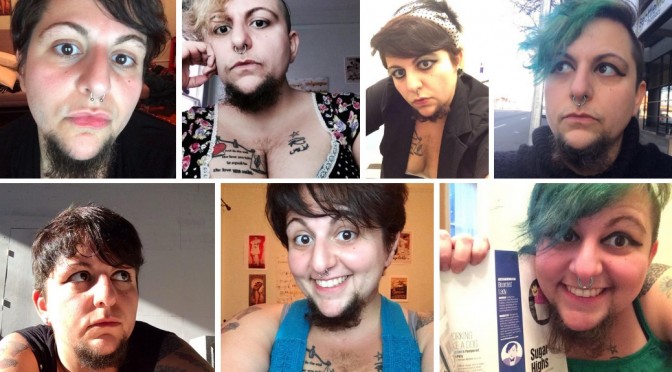Category Archives: Love & Relationships
Church of England’s Don’t Ask Don’t Tell policy on LGBT sexuality
CofE Marriage and Same Sex Relationships Report
It was National Chocolate Cake Day on Friday and the Church of England celebrated it by issuing a fudge of a report on LGBTI acceptance in the Anglican Church. The 15-page report published today called for “a fresh tone and culture of welcome and support for lesbian and gay people” – well, so long as you are celibate and don’t want to get married.
Bishop Graham James of Norwich led the CofE report into LGBTI people in the Church and concluded that there should be no change, some repentance, maximum freedom within existing prejudice – I mean doctrine, and called for more reports to conclude that there should be no future change either.
Okay, that last bit was me being cynical and pessimistic, but whilst history has seen the addition and change of women in not only leadership but the episcopacy, I find it hard to imagine ecclesiastical change on the position of gay and lesbian Christians any time soon, not to mention the very binary gendered position on marriage when even the Bible acknowledges the existence of people outside of binary male and female.
I was defriended by evangelical Christian friends and told by my Prayer Book church that it was easier for them to believe that I’d committed adultery (I hadn’t) than for them to understand my being transgender. Upon being asked to leave, and I used to deliver sermons there during an interregnum, I was offered the sickly salve of “I can put you in touch with more affirming churches”.
The current of society is flowing forward faster than the Church can even tread water mid-stream. As a result, it is like dead wood somehow anchored and stuck by a pseudo-theological/traditional snag whilst open-minded thinkers float on by. If the truth will set us free, then the Church needs to wake up to the risk of its own demise, ageing population and irrelevance to this generation. I was once a young person in a church, going on to become a missionary and theologian until my identity was rejected by the Church. It seems the Church is not interested in the truth of authenticity, something that has truly set me free.
The Church is not adaptable
Bishop James said that the church should not:
“adapt its doctrine to the fashions of any particular time…I don’t think that if the church adapted its doctrine to the fashions of any particular time, that would mean it would be expressing the historic faith.” – Bishop James
The bishop and the report also used language such as “culture of our times” and “lifestyle” questions, inadvertently suggesting that LGBT lives were temporary cultural lifestyle choices that would perhaps go out of fashion whilst the Church’s doctrine remained written in stone, essentially.
Any student of ecclesiology and patristics well knows how Christian theology and church practice have been hammered out at councils, and been at the whim of political and personal beliefs of the time.
Not to mention, the dubious concept of biblical marriage given how many types of marriage there were in the Bible, only one of which is between “one man and one woman”. Two women or hundreds more were also options, as were sisters, slaves, prostitutes, and eunuchs. Sexual relations often began before marriage – even defined it, sometimes.
Clergy & Laity Double Standards
It was concluded that there was no double standard in denying gay clergy active sexual relationships and yet allowing homosexual lay people to express their love physically since canonical law demanded “an exemplary position of the clergy”. Yet, the double standard is that the same celibacy is not required of heterosexual clergy except in the Roman Catholic Church.
“some bishops who would like to see the sinfulness of any
sexually active relationship outside heterosexual marriage more consistently upheld.”
So, going forward, heterosexual clergy may be asked similar questions or homosexual clergy not asked and “trusted”, so as to bring in an equality of ordinand interrogation. Bishop James said this is “Not Don’t Ask, Don’t Tell in any shape or form.” Sounds like it to me and the Lesbian and Gay Christian Movement and Changing Attitude open letter today now terms it “official policy”.
“No Change” – the way forward is backward thinking
“There is no change in theology, no meaningful change in practice and no change in discipline.” – LGCM & Changing Attitude open letter
Whilst canonical interpretations were described as “a latitude with boundaries” it seems the Church has butted up against those boundaries and finds little room for present or future movement.
“what they’ve announced is the most incredibly painful policy which offers zero change after 6 years of false reassurance and asking us to be patient and wait and see. We waited, some of us very unwillingly and they’ve dished out a load of shit.” – Rev Colin Coward
A painful policy indeed, exacerbated by the dangled signs of hope, now effectively withdrawn. Another priest drew attention to the bishops’ asking for sympathy for their plight:
“The report is at pains to emphasise just how difficult and painful all this has been – FOR THE BISHOPS! – and begs us to sympathise with them.” – Rev Miranda Threlfall-Holmes
Whilst Bishop James says it’s not the “last word on this subject”, it sounds like it is the last nail in the coffin for LGCM & Changing Attitude members who are “not prepared any longer to wait for the bishops to act collectively in this matter”. Their grace and patience have been stretched too far.
Whether it’s the Issues in Human Sexuality (1991), Pilling Report (2013) or the current statement (2017) it seems the Church of England is firmly rooted in the Christian tradition – of the past.
A muddled Church lacking in Love
The Marriage and Same-Sex Relationships after the Shared Conversations report opens early with the words:
“If we are heard as lacking in love, our ability to proclaim the God of love as revealed in Jesus Christ is damaged or negated.”
Sadly, that is the way the report is most likely to be heard by LGBTI Christians and LGBT-affirming society as a whole.
Bishop James said this was not the end of the process but left the Church “somewhere in the middle”. I think that is a typo for “muddle”.
January Blues? National Hug Day may offer an Oxytocin rich cuddling cure
National Hug Day combats January Blues
National Hug Day was an idea put forward by one Kevin Zaborney in 1986. Whilst January 21 was not overly significant it fell halfway between New Year’s and Valentines. Zaborney thought US society was “embarrassed to show feelings in public” and hoped a National Hugging Day would help change that, but actually didn’t hold out much hope that it would catch on. Well it did, and nearly 20 years on, folk are still hugging. (If you want more cuddling cats then read to the end!)
Free Hugs Campaign
Across several continents, during public demonstrations or random acts of kindness, one can often witness people offering “FREE HUGS”. A phenomenon that began in Australia around ten years ago and has since taken off everywhere.
Over 77 million people have watched this “Free Hugs” video:
I’ve participated in Free Hug events, even a public mixed-sex kiss-in to challenge public perceptions of same-sex displays of affection and homophobia. I’ve also done cuddle workshops, had cuddle buddies, and queued for hours to hug with Amma, the 34-million-people-hugged queen of hugging. Amma, or Mata Amritanandamayi, says her only religion is love. Hate and war aren’t working, so perhaps we need a revival of 1960s-70s peace and love.
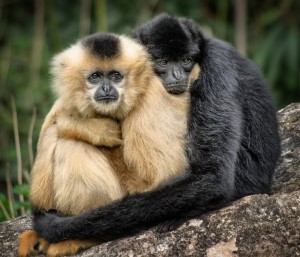
As an atypically unreserved Brit, I can safely say that most of us consider our American cousins overly huggy, not me I can’t get enough of them – giving or receiving. That said, research has also shown that many European nations, such as the French or Spanish, spend even more time hugging or kissing.
In the midst of the Ferguson riots and response to the Michael Brown shooting one good news story emerged at a Portland demo, that of a kid offering hugs, even to a policeman. Devonte Hart was photographed hugging Sergeant Brett Barnum. According to the original Oregonian article, Hart was holding a “free hugs” sign. Barnum called him over and they talked about the demonstration, school, life and art. Afterwards, Barnum pointed at his sign and asked: “Do I get one of those?”
Commercial Cuddles by the hour
One woman in America has seen her cuddle-by-the-hour at $60 a time therapy business take-off with 10,000 enquiries in the first week! The www.CuddleUpToMe.com site, aka Samantha Hess, offers safeguards and various non-sexual options. She describes herself as a “professional cuddler” and offers to be the “big spoon or the little spoon”, although she is a petite 5ft tall, height is barely relevant when lying down.
Even in the usually reserved and private UK there are cuddle meetups, parties, and workshops, to be found. Bastion of poking fun, The Daily Mail actually has a healthy write up about one. Anna Shekory of Cuddle Workshop and Tom Fortes Mayer of FreeMind are involved in the UK workshops and meetups.
“Cuddle Workshop is not affiliated with Cuddle Parties in the USA. We are similar yet different from Cuddle Party. Like them, we offer a safe boundaried space to explore nurturing non-sexual touch.”
Oxytocin the oxygen of happiness
Call it human comfort, closeness, community, or what you will but one chemical name it goes by is Oxytocin, the cuddle compound, hug hormone, and slightly more doubtfully, the moral molecule.
Oxytocin is my drug of choice. Oxytocin is a very potent and powerful hormone. When we hug, kiss, or share closer intimacies our oxytocin levels shoot up. Half-a-minute’s hugs can raise oxytocin levels and maintain them throughout the day. Hugs have been shown to act an as anti-inflammatory healer, pain relief, mood relief, counter stress and anxiety, increase generosity, trust, ease PTSD, aid social bonding in autism, relieve heart pressure and more!
More oxytocin means less stress, mental and cardiovascular, and an improved immune system. According to Dr Zak, author of “The Moral Molecule“, even hugging strangers releases the oxytocin sense of wellbeing, so long as the hug is permitted and welcomed, I would hasten to add, nor an excuse for a fondle or grope.
Neuroeconomist Zak, or “Dr Love”, calls oxytocin our “social glue” and according to one interviewer has all the appearance of “having been constructed in a laboratory charged with creating the ideal deliverer of TED talks”.
Zak encouraged skeptical New Yorkers at an event called Love Night to embrace each other, “If it works on 500 random New Yorkers, it’ll work for you,” Zak says.
TV and Social Media can be good for you
Feelgood movies can lead to a 47% surge in oxytocin levels. Television can actually be good for you! Especially, if watched whilst cuddled up in bed or on the sofa with another warm human being.
Even Facebook is good for you, or can be when used for positive social interactions in the absence of face-to-face possibilities.
“Social media is often heralded as the end to meaningful interaction” but science can demonstrate a different story. “While studying people’s oxytocin levels after using Facebook and Twitter, Dr. Zak saw oxytocin release in every participant…Though in-person interactions are much richer, he says, there’s room for the Internet.” Commenting on a Twitter experiment, Zak says:
“Your brain interpreted tweeting as if you were directly interacting with people you cared about or had empathy for, E-connection is processed in the brain like an in-person connection.”
It is also showing up as a drug to aid against obesity, act an as anti-inflammatory healer, pain relief, mood relief, counter stress, increase generosity, trust, and more. Indeed, “oxytocin is proving to be a crucial ingredient to what makes us human”.
“Studies are showing that it may be effective in treating debilitating shyness, or to help people with social anxieties and mood disorders. It’s also thought that oxytocin could help people suffering from post traumatic stress disorder. In addition, given that autism is essentially a social communication disorder, it’s being considered as a way of helping people on the spectrum as well. And lastly, oxytocin, through its trust-building actions, can help heal the wounds of a damaged relationship — another example of how the mind gets its plasticity.”
The realists and skeptics out there may need to read something more balancing, such as this piece by Ed Yong who kicks oxytocin and Dr Zak back into touch. Further pointing out that for some the benefits may only enhance your pre-existing mindset. One study showed that oxytocin actually caused less trust and cooperation among people with Borderline Personality Disorder (BPD).
Amanda Palmer in the Guardian writes that if she “were queen for a day, cuddles would be mandatory. I would counter the epidemic of human encounterlessness with cuddle centres for those who never get a proper hug.”
If you are one of the 7-8 million single people or third of the UK that will be living alone as we age, then if the encounter with a cuddle party, meetup or professional cuddler, is just way beyond your British reserve or shyness, what can you do?
If cuddling is out of bounds, try petting
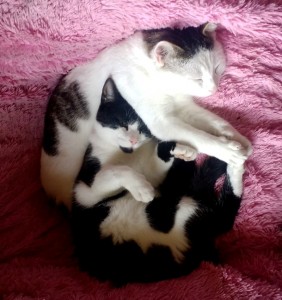
Clinical psychologist Dr Glenn Wilson suggests that “getting a kitten and petting it might have a similar soporific, calming effect.”
That may explain the equal rise of cat cafes and the opportunity to go and cuddle a kitty, or some other furry, if you live alone in rented accommodation that bans pets. People with pets apparently recover faster from illness and find their stress levels reduced. It may also be easier to maintain one’s boundaries with a cat!
Hugs on prescription?
Okay so they may not bring about world peace just yet but they can comfort or console what they can’t cure! So have a hug or pet a cat on me today!
World AIDS Day some Sex & Gender Myth Busting about HIV
World AIDS Day, December 1
When World AIDS Day comes around each year, we memorialise those lost to the infectious disease, but also recognise that for many it is no longer a death sentence, certainly not an imminent one. People live longer and fuller lives after diagnosis than ever before. It remains, however, the biggest cause of death for African teens and “the second biggest killer for adolescents around the world” (UNICEF). The theme of World AIDS Day 2015 is: “Getting to zero; End AIDS by 2030.”
In the UK, a Kissing Booth in Soho Square was today spreading the message that “Kissing Doesn’t Spread HIV. Ignorance Does.”
Whilst HIV and AIDS are improving in the UK, and we congratulate ourselves on survival rates, better education, and great use of celebrities, social media, schools etc to combat residual ignorance – meanwhile, it remains Africa’s biggest killer – not terrorism and conflict. Fear and denial of homosexuality or MSM (Men who have sex with men) does not help. LGBT equalities, freedoms and awareness will help end the ignorance, but teaching safe sex and that heterosexual people, men and women, are the biggest at risk populations, is vital.
HIV Facts not Fear
- Around 100,000 people are living with HIV in the UK
- Only 1% of those in the UK with HIV died from AIDS
- Only 0.3% in the UK go on to develop AIDS from HIV
- UK people can expect a normal life expectancy with the disease
- Some 34 million worldwide are living with HIV
- Some 33 million worldwide since 1984 have died
- Sub-Saharan Africa has the most serious HIV and AIDS epidemic in the world with 25m people, 5% of all adults
- Over a million deaths annually from HIV in Africa
- Swaziland has the highest HIV prevalence of any country worldwide (27.4%)
- South Africa has the largest epidemic of any country with 5.9 million people living with HIV
- More women than men in Sub-Saharan Africa have HIV and each year 10% of women without HIV become infected especially 15-24 year olds
- 26 new HIV infections an hour for African teens aged 15-19 with girls making up 70% of those infected
- It is the biggest killer of young people in Africa, second biggest worldwide
- Poverty is a social determinant for HIV infection across all age groups in South Africa
- 20% of those in the US with HIV are women (84% from heterosexual sex)
- Over 125,000 women with HIV in the US have died since 1984
- Effective treatment makes you non-infectious
- HIV is mostly caught from unprotected sex with anyone (95%)
- It can be developed from intravenous drugs needle sharing (2%)
- It can also be caught in extremely rare unscreened circumstances from infected blood through transfusion, organ transplant, and mother to baby (0.5% chance)
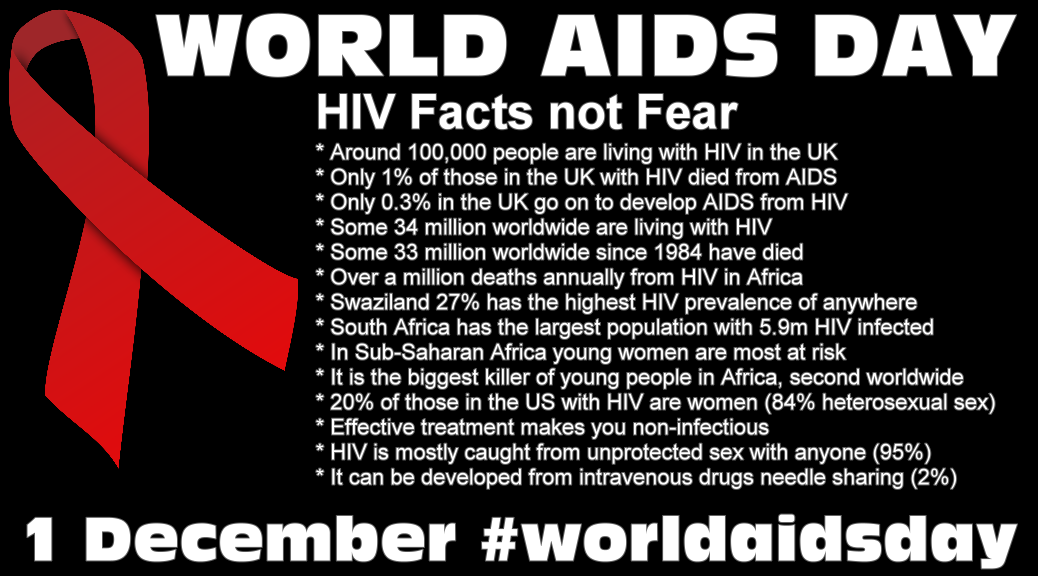
More UK facts on the National AIDS Trust site, US women data from CDC. Other facts where linked.
On World Aids Day HIV we are right to remind people that AIDS is no longer a death sentence in the UK. It remains, however, Africa’s biggest killer, not terrorism or conflict. There is a global imbalance in health prospects, life expectancy, sex education, drugs funding, and attitudes to the value of people’s lives of different races and nationalities.
Beautiful Queer Non-Binary Beardy Pride vs Fetishing, Hate or Body-Shaming
Hirsute Self-Love rather than Self-Loathing or Other-Lust
If you are different, queer, ‘other’, a bearded lady, or something else, the only two choices are not – be persecuted or be fetishised, be hated or loved for a mere body part/characteristic, be single and lonely or stuck in a settled-for second-best relationship.
“Don’t be grateful [for second-best] … Because someone out there will “actually” love you for who you are.”
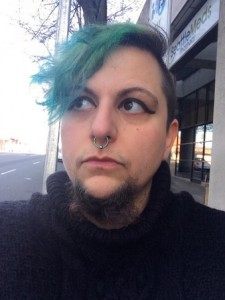
That quote is from a great post by Little “Beardy” Bear Schwarz, a queer non-binary woman who just happens to have a beard.
Yes, that is possible. Various medical conditions (e.g., PCOS), and/or intersex variations, can mean that a woman’s hormones produce the extra secondary sexual characteristic of facial hair that can rival or beat that of some men’s attempts to grow a lumbersexual beard. Most would shave continually, indeed Schwarz did for 17 years. A rare few like Little Bear or Balpreet Kaur embrace the difference and are part of humanity’s out-and-proud diversity.
“I don’t need to perpetuate an idea that having being female-bodied and bearded is WRONG, as it is not. I am beautiful as I am.” – Little Bear Schwarz
Standing Out from the Crowd
But difference marks one out for mostly unwanted attention – abuse, curiosity, investigation, fetishisation, exclusion, or intervention and normalisation.
If you are different, othered by birth, choice, or accident, in some way, going unnoticed is not an option, there is no radar to fly under, you are under constant view and scrutiny.
“How do I assert that no one who chooses to live out loud is “asking for it?” Catcalling, entitlement, and body shaming exist among all people and to all genders. However, there is an expectation among people like me whose appearance is deemed “othered.”” – Lil Bear Schwarz
Fetish, Kink and Body Shaming
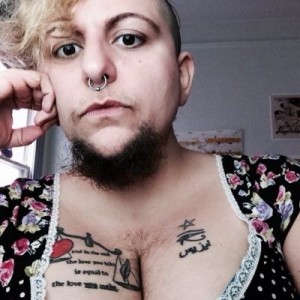
Schwarz says with bucket-loads of self-respect that:
“If all you can do is reduce me down to one small aspect so you can add me to your fetish collection, it is YOUR LOSS, because you are missing out on all the other things that make me beautiful.”
At the same time as Schwarz not wanting to be body-shamed, nor do they kink-shame, as they clarify on Twitter:
When I’m pointing out a #fetishist acting #creepy, I’m NOT #KinkShaming. Even kinksters have personal responsibility to not feel entitled.
— Little Bear Schwarz (@LilBeardyBear) March 30, 2015
On Labels and Definition
Smugly declaring, “I don’t need #labels,” exposes your #privilege of never having to wonder what you are, and if what you are has a name. — Little Bear Schwarz (@LilBeardyBear) April 2, 2015
Whilst labels can be limiting, they can also be liberating. These are just some of the other words that Little Bear uses to describe, but not necessarily to define, themselves by:
“Bearded Lady, sideshow performer with Wreckless Freeks, opera/showtune singer & fan, writer, editor, spoken word artist, poly/pan, NB, SJW, and casual chef.”
GenderQueer and Gender-full
Another word they use is “GenderQueer” or the fabulous “genderful” to describe their male-female blend, fluidity and, when performing, their focus on a part of the gender spectrum.
“Being both genderqueer and being billed as a “bearded lady” presents no conflict to me because it is not as much inaccurate as it is just incomplete. My gender identity is what I call “genderful” – a blend of masculine & female elements and everything in between.
#WhatGenderqueerLooksLikepic.twitter.com/ojOfWZqGkb
— Little Bear Schwarz (@LilBeardyBear) October 25, 2014
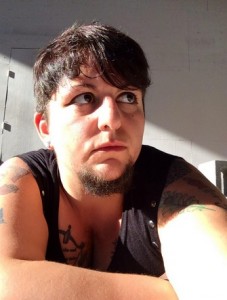
See the full, pulling no punches, personal blog post by Lil Bear Schwarz on Ravishly, whose tagline is “There’s no wrong way to be a woman”. If you want to follow Little Bear more, having read their post and for all the right reasons, then they are on Twitter @LilBeardyBear and Facebook.
Loving yourself for who you are and how you look become even more vital to self worth and survival if you stand out in a crowd, in a non-stereotypically beautiful way. It is, in the end, the only route to self-confidence and happiness, and the best way to guarantee that anyone you choose to be with is with you for you, because you don’t need their affirmation, it is just the icing on the cake of self-love and self-respect. Genderqueer beard, beautiful person, and all.
